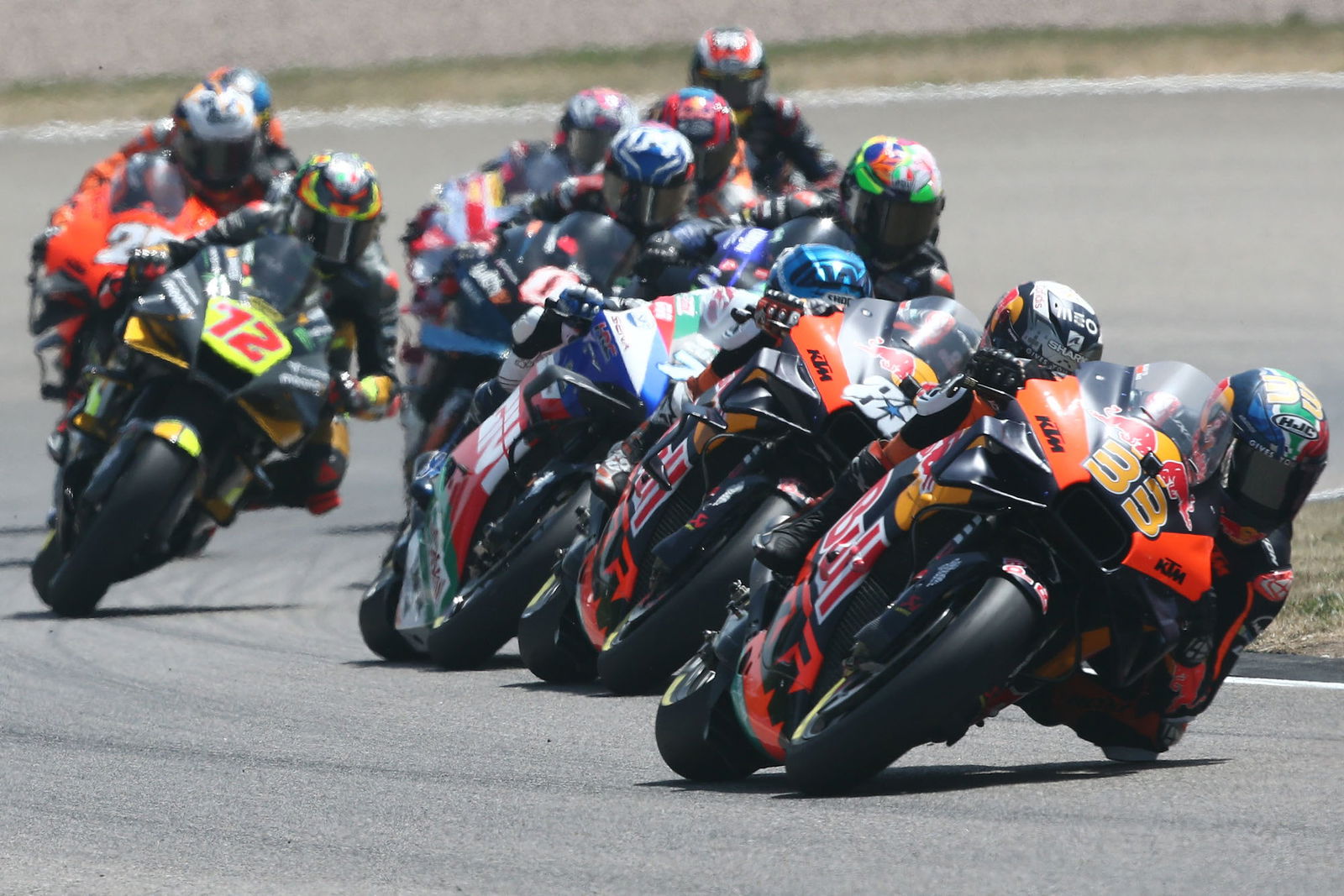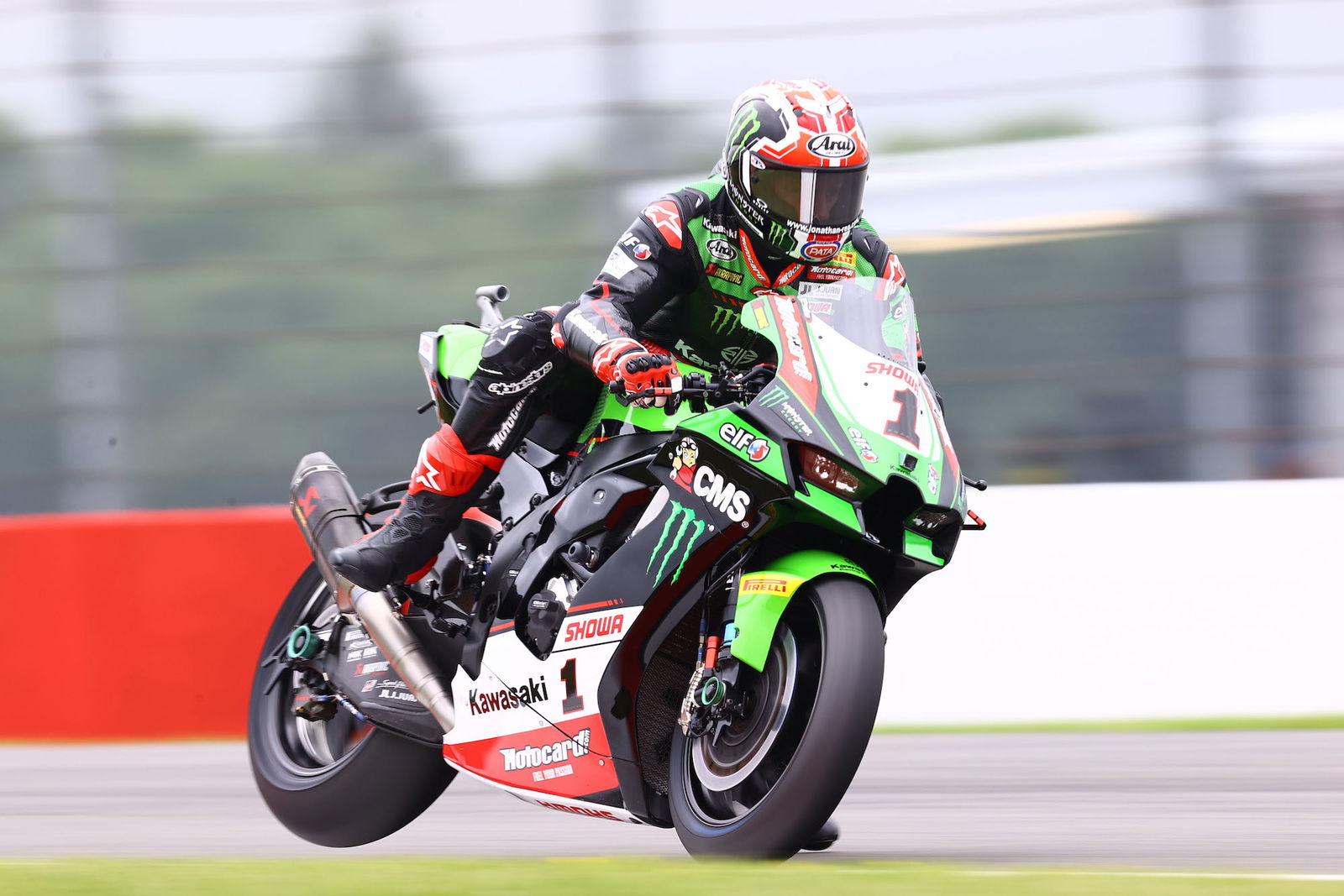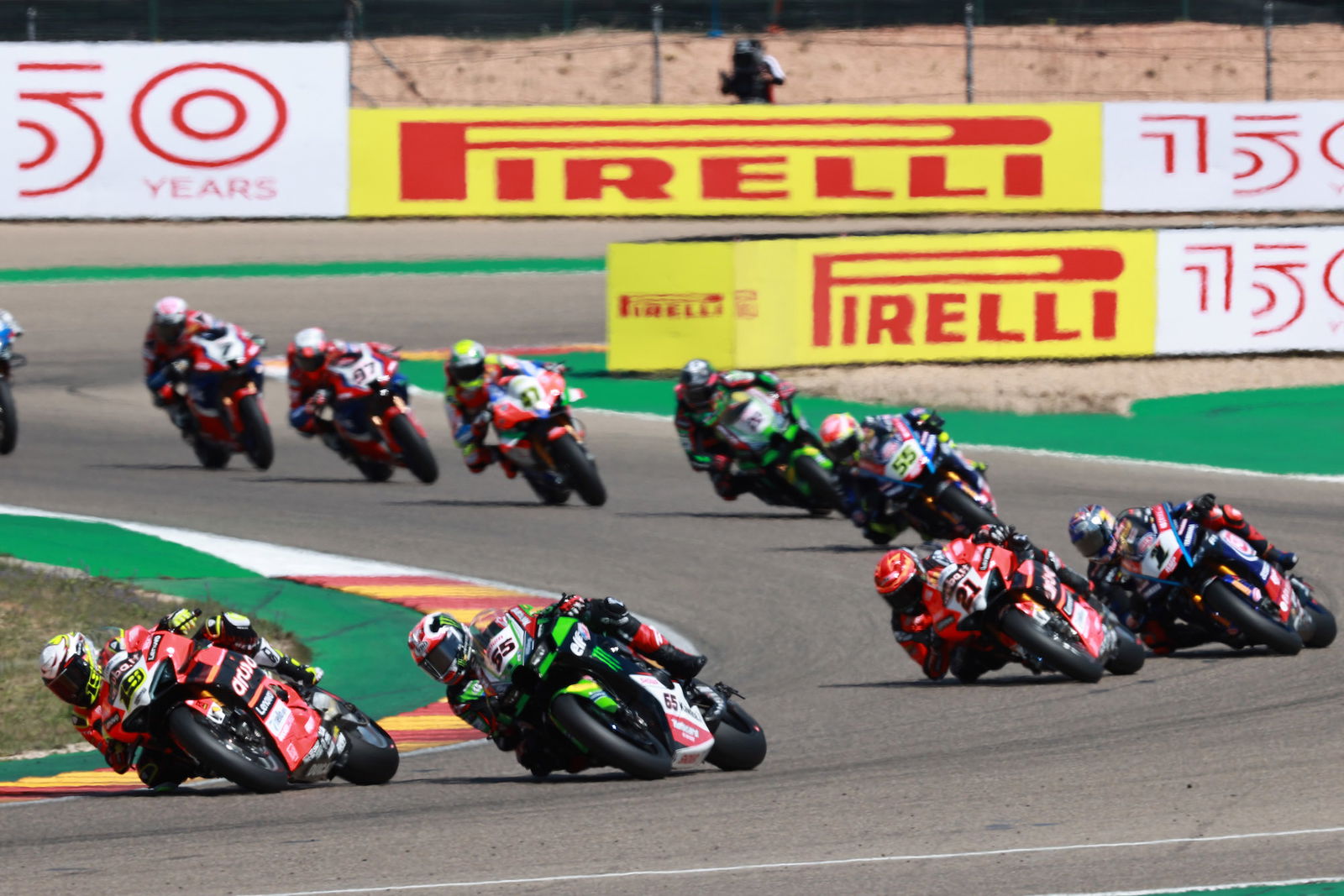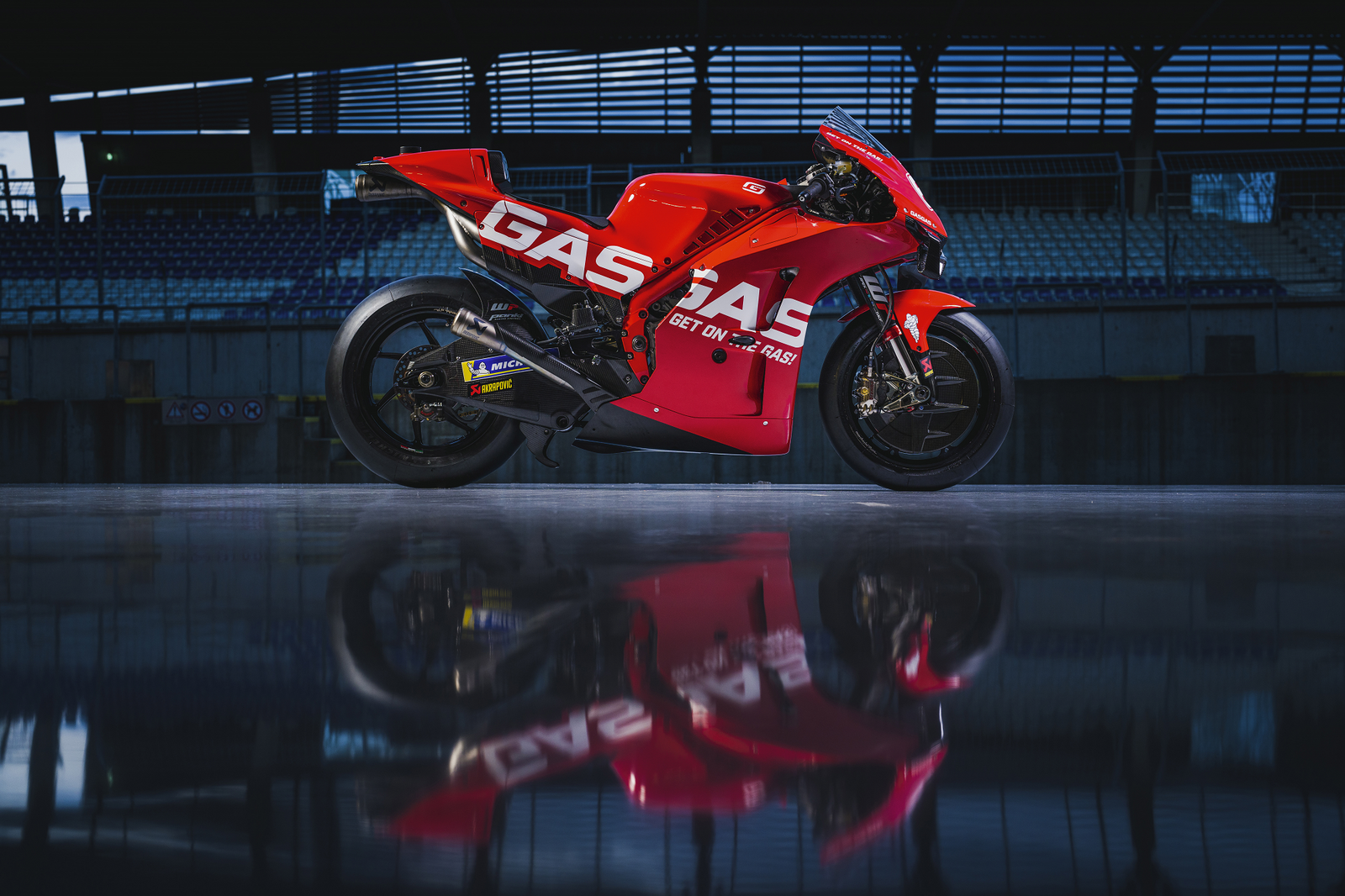MotoGP set to run F1-style sprint races from 2023 season
MotoGP is planning to bring in F1-style sprint races from 2023, as Dorna looks to revitalise the championship and update the race weekend format.

MotoGP is set to include sprint races from 2023, as it looks to revamp the championship's race weekend format by taking something that has worked for both WorldSBK and F1.
Sprint races have become more prevalent in racing over recent years, with Formula One bringing F1 Sprints to some race weekends last year, WorldSBK using their own 10-lap Superpole races since 2019, and British Superbikes have had shorter races on Saturdays at every race since 2020.

Now, MotoGP is planning to bring sprint races to its own weekend format, according to Motorsport.com. The sprint race would be run at every weekend at the cost of a practice session and Sunday morning warm up, but would not have any bearing on grid position for the Grand Prix. These are not confirmed, yet, but are an idea that is reportedly supported by the teams as well as MotoGP commercial rights holder Dorna.
The positive point for bringing sprint races to MotoGP is similar to those of the sprint races in both WSBK and F1. It all comes down to numbers - numbers of fans buying tickets, number of fans watching the races on TV - and creating cost-effective ways of making those numbers higher. Fortunately, when it comes to attracting and retaining fans, it is also about entertainment.
As Jonathan Rea rose to the peak of his powers in the latter half of the 2010s, World Superbikes’ entertainment value suffered dramatically. They had a situation where the best rider was in the best team, and they were using a bike which was at least on an equal level to its competitors.

The result was brutal domination, not just of the championship, but of the majority of races through a season. That led to predictability, which is the primary thing all sports want to avoid. If you know what is going to happen on Sunday when you turn up to the track on Wednesday, a lot of the excitement is sucked out of the weekend.
WorldSBK tried reverse grids, but that only increased the advantage of Rea, who was better at overtaking than his rivals who would finish on the podium with him in the first race.
Ultimately, Dorna - the commercial rights holders for WorldSBK - decided that sprint races might be the answer to its competition problem. In a way, they were right.

They brought in 10-lap sprint races for 2019, that took place on Sunday mornings and would decide the grid for the second full-length race of the weekend on Sunday afternoon.
They turned out to be more than qualifying races, though, like we see in MXGP. In those cases, the riders decide, generally speaking, that the risk of crashing in a qualifying race is not worth the reward of a better gate pick, and therefore the races can be quite processional.
But, in WorldSBK, the 10-lap sprint format - and the reward of points and the recognition of the sprint race as an actual race, not a qualifying session - meant that it was a race worth fighting for.

It is not that the Superpole race throws up surprise winners in WorldSBK (Michael van der Mark in Portimao last year being an exception), but that the pack does not generally get chance to spread out, and riders do not have to worry so much about tyre wear. That means brutal racing, and that was highlighted especially at the most recent round of the 2022 Superbike World Championship in Most, where Toprak Razgatlioglu and Jonathan Rea battled until the very end. This is a regular occurrence, but the brutality of the racing in Most between the two rivals was especially intense.
The most recent MotoGP race in Silverstone was a similarly spectacular battle, although for different reasons. The top 10 at the end of the British Grand Prix were separated by just six seconds, and until the final two laps it was mostly unclear who would win.

In the end, the race was decided by two mistakes from Maverick Vinales on the final lap, which allowed Francesco Bagnaia to escape, but the race was epic, and certainly one of the more memorable ones from 2022.
And that seems to be the point of Dorna’s plan for MotoGP. The racing in general this season has not been great, because of reasons that have already been discussed at length both here on Visordown and in other places on the internet. Essentially, the front tyre cannot withstand the pressure put on it by the recent technology developments in MotoGP: specifically the ride height devices and aerodynamics. These make the braking distances shorter and braking intensity higher, which increases the temperature and pressure of the front tyre, which makes it harder to overtake.

The Spanish Grand Prix in Jerez was the ultimate example of this, when Fabio Quartararo sat behind Francesco Bagnaia all race, but was never able to launch an attack on the Italian.
Silverstone was an exception to the relatively underwhelming racing we have seen so far this year, but Dorna would of course prefer that the racing were more like Silverstone more often. Since it will be difficult to get factories (one or two in particular) to go away from aerodynamic wings and ride height devices, a sprint race is a more viable option, especially in the short-term, to create improved racing. This is good for fans, it is potentially good for attracting new fans, and it is therefore good for the championship and its commercial rights holder, Dorna.

Will it fix the actual problem of difficult overtaking creating underwhelming racing in the actual Grand Prix? Potentially not. After all, part of the reason WorldSBK has improved in terms of entertainment over the last couple of years is that riders like Toprak Razgatlioglu and Alvaro Bautista have been able to challenge Jonathan Rea consistently. As previously mentioned, the racing in WSBK is brutal, and that there are three standout riders that are racing so aggressively means there are obvious and clear rivalries.
MotoGP’s parity between the factory and satellite teams also means there are no distinctive rivalries, as they were in the past with the four ‘Aliens’ of the late 2000s and early 2010s, for example. Because any of 10 or 15 riders could be on the podium or out of the top 10 from one weekend to the next, there is no possibility for individuals to create rivalries, because they are never racing only against one other rider. More often, it is three or four, or even more, as we saw in Silverstone.
This is the bigger problem for MotoGP, and it is a more difficult one to fix. It is objectively positive that almost every bike on the grid is capable of winning a Grand Prix, but that also detracts from the simple sporting rivalries that WorldSBK is able to take such great advantage of at the moment.
But, finally, the sprint races would be a good thing for essentially everyone who likes MotoGP. A shorter race promotes more aggressive racing, and additional racing is good for fans, even if it means missing a practice session, or a warm-up on Sunday morning.

